
Caguas: The Heart of Puerto Rico's Mountains
Discover Caguas, Puerto Rico - a picturesque city where lush mountains meet rich cultural heritage, offering a perfect blend of relaxation, adventure, and local charm.
Nestled in the lush mountains of Puerto Rico, Caguas is a city that beautifully blends natural beauty with rich cultural heritage. Known as the 'Valley of Turabo,' it offers a serene escape from the hustle and bustle of more tourist-heavy areas. Visitors will find themselves surrounded by verdant landscapes and a sense of tranquility that is hard to match. In Caguas, history comes alive through its well-preserved colonial architecture and vibrant local traditions. The city is home to the impressive Caguas Botanical and Cultural Garden, where you can explore both native flora and historical exhibits. For those interested in the arts, the Museo de Arte de Caguas showcases a variety of Puerto Rican art, from contemporary pieces to historic works. The culinary scene in Caguas is a treat for the senses. Local eateries serve up traditional Puerto Rican dishes with a twist, making it a food lover’s paradise. Whether you are savoring a plate of mofongo or sipping on a refreshing piña colada, the flavors of Caguas are sure to delight. As you wander the streets, you'll also find charming cafes and vibrant markets, perfect for leisurely afternoons. Caguas is not just about relaxation; it offers plenty of activities for the adventurous spirit. Hiking trails abound in the surrounding mountains, providing stunning views and a chance to connect with nature. The city also hosts numerous festivals throughout the year, celebrating everything from local crafts to music and dance, ensuring there's always something exciting happening. Whether you're seeking a peaceful retreat or an engaging cultural experience, Caguas has something to offer every traveler. Its unique blend of natural beauty, history, and vibrant local life makes it a must-visit destination in Puerto Rico.
Local tips in Caguas
- Visit the Caguas Botanical and Cultural Garden early in the morning to avoid crowds and enjoy a peaceful experience.
- Try the local dish 'mofongo' at one of the traditional eateries for an authentic taste of Puerto Rican cuisine.
- Check the local event calendar before your visit to catch one of the city's vibrant festivals.
- Wear comfortable shoes as the best way to explore Caguas is on foot, especially when wandering through its charming streets and markets.
- If you enjoy hiking, pack your gear and explore the trails in the surrounding mountains for some breathtaking views.
Caguas: The Heart of Puerto Rico's Mountains
Nestled in the lush mountains of Puerto Rico, Caguas is a city that beautifully blends natural beauty with rich cultural heritage. Known as the 'Valley of Turabo,' it offers a serene escape from the hustle and bustle of more tourist-heavy areas. Visitors will find themselves surrounded by verdant landscapes and a sense of tranquility that is hard to match. In Caguas, history comes alive through its well-preserved colonial architecture and vibrant local traditions. The city is home to the impressive Caguas Botanical and Cultural Garden, where you can explore both native flora and historical exhibits. For those interested in the arts, the Museo de Arte de Caguas showcases a variety of Puerto Rican art, from contemporary pieces to historic works. The culinary scene in Caguas is a treat for the senses. Local eateries serve up traditional Puerto Rican dishes with a twist, making it a food lover’s paradise. Whether you are savoring a plate of mofongo or sipping on a refreshing piña colada, the flavors of Caguas are sure to delight. As you wander the streets, you'll also find charming cafes and vibrant markets, perfect for leisurely afternoons. Caguas is not just about relaxation; it offers plenty of activities for the adventurous spirit. Hiking trails abound in the surrounding mountains, providing stunning views and a chance to connect with nature. The city also hosts numerous festivals throughout the year, celebrating everything from local crafts to music and dance, ensuring there's always something exciting happening. Whether you're seeking a peaceful retreat or an engaging cultural experience, Caguas has something to offer every traveler. Its unique blend of natural beauty, history, and vibrant local life makes it a must-visit destination in Puerto Rico.
When is the best time to go to Caguas?
Iconic landmarks you can’t miss
Shops at Caguas
Explore the Shops at Caguas: A shopping paradise with diverse retail offerings, delicious dining options, and a taste of Puerto Rican culture.
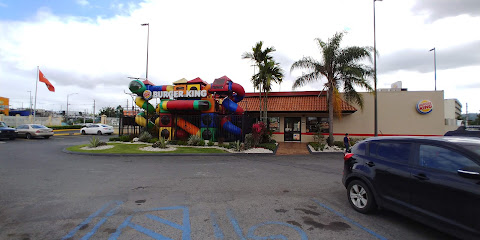
Plaza Pública Santiago R. Palmer
Explore Plaza Pública Santiago R. Palmer, a vibrant historical landmark in Caguas, Puerto Rico, blending nature and culture in a serene park setting.
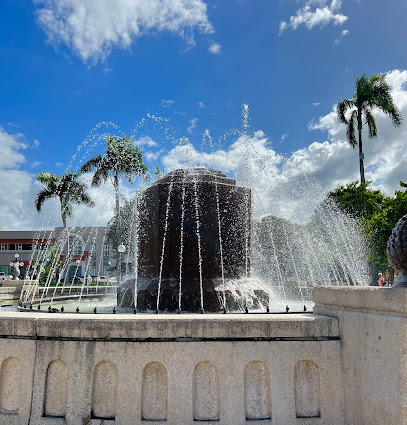
Jardín Botánico y Cultural William Miranda Marín
Discover the stunning flora and cultural heritage at Jardín Botánico y Cultural William Miranda Marín, a serene botanical garden in Caguas, Puerto Rico.
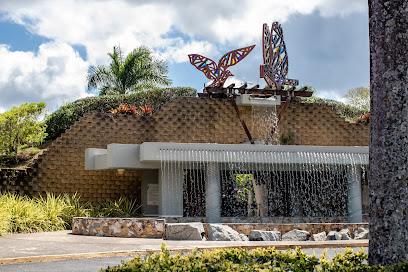
El Manjar Criollo
Experience the true flavors of Puerto Rico at El Manjar Criollo, a culinary gem in Caguas serving authentic dishes in a vibrant atmosphere.
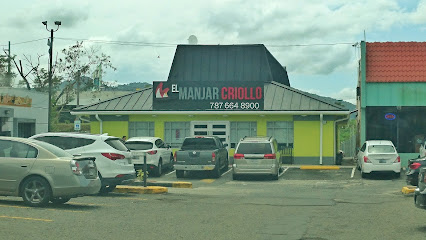
La Placita Tropical (La Melaza)
Savor the vibrant flavors of Puerto Rican cuisine at La Placita Tropical in Caguas, a must-visit dining destination for food lovers.
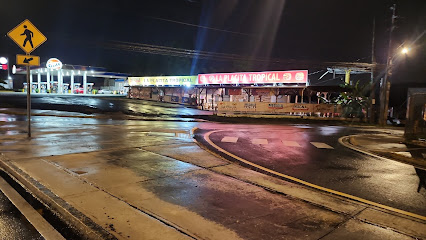
La Asturiana
Discover the taste of Puerto Rico at La Asturiana, a beloved bakery in Caguas offering a delectable assortment of pastries and breads.
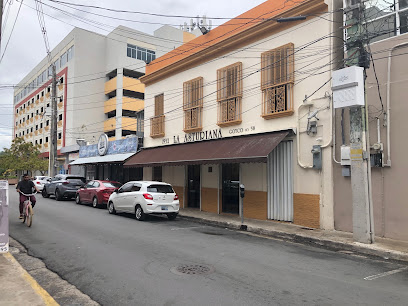
Ojalá Speakeasy Restaurant
Discover the unique flavors of Puerto Rico at Ojalá Speakeasy Restaurant, a vibrant culinary haven for tapas, brunch, and cocktails in Caguas.
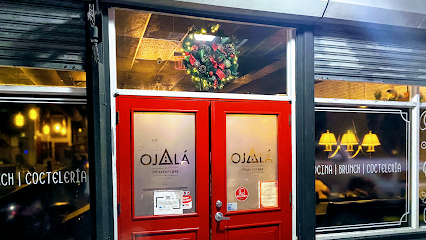
Plaza Centro
Explore Plaza Centro in Caguas: A shopping haven with a delightful mix of retail, dining, and entertainment experiences.
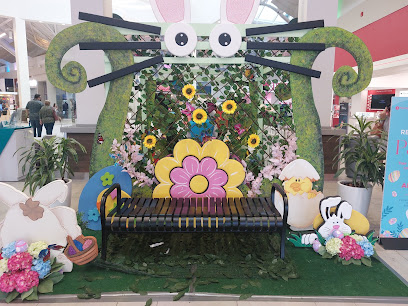
Plaza del Mercado de Caguas
Discover the rich flavors and vibrant culture at Plaza del Mercado de Caguas, a must-visit farmers' market in Puerto Rico.
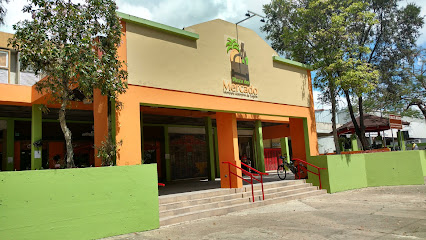
La Lomita de Charlie
Experience the lively atmosphere and delicious grilled cuisine at La Lomita de Charlie, a must-visit bar and grill in Caguas, Puerto Rico.
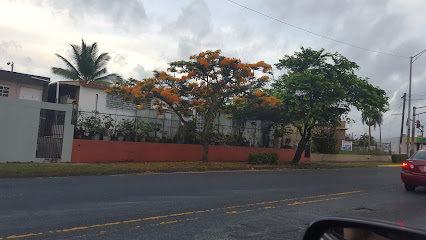
El Grifo
Discover El Grifo in Caguas, Puerto Rico - a vibrant vegan restaurant blending local flavors with plant-based innovation for a delightful dining experience.
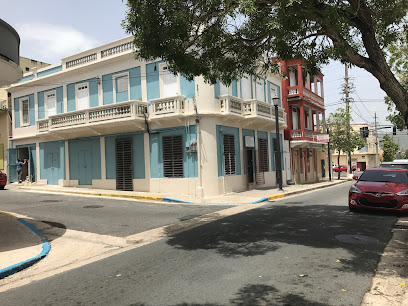
Kaffe Haus
Experience a unique culinary journey in Caguas at Kaffe Haus, where traditional breakfast meets modern creativity in a cozy setting.
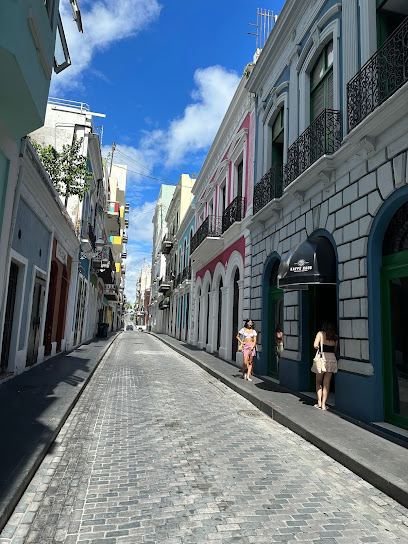
La Cueva del Mar Caguas
Experience the best of Puerto Rican seafood at La Cueva del Mar Caguas, where fresh flavors and local culture come together in a vibrant setting.
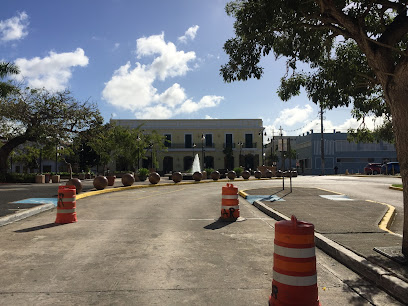
Pa’Cuba 1954
Experience authentic Caribbean cuisine at Pa’Cuba 1954 in Caguas, Puerto Rico; a culinary journey filled with vibrant flavors and warm hospitality.
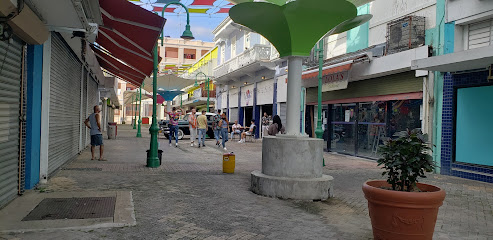
Caguas Food Park
Experience the culinary delight of Caguas Food Park, where diverse flavors come together in a vibrant atmosphere, perfect for food lovers and families.
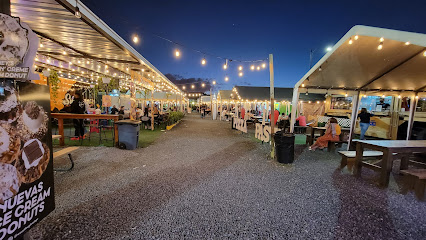
Unmissable attractions to see
San Juan National Historic Site
Discover the captivating history and stunning architecture of San Juan National Historic Site, a UNESCO World Heritage gem in Puerto Rico.

Castillo San Felipe del Morro
Discover the history and beauty of Castillo San Felipe del Morro, a UNESCO World Heritage Site that guards the shores of San Juan with its stunning architecture and breathtaking views.
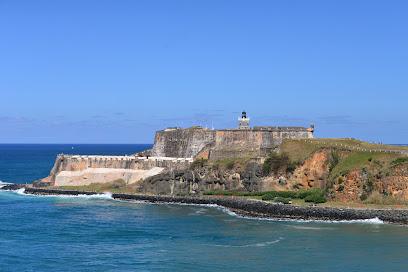
Carabalí Rainforest Park
Discover the thrill of adventure and the serenity of nature at Carabalí Rainforest Park in Luquillo, Puerto Rico.
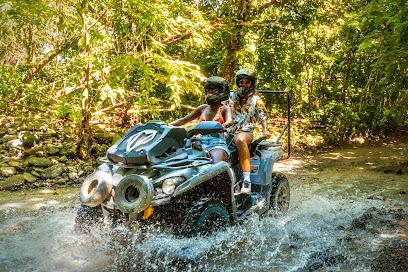
DISTRITO T-Mobile
Discover the vibrant atmosphere of DISTRITO T-Mobile in San Juan, where dining, shopping, and entertainment come together for an unforgettable experience.
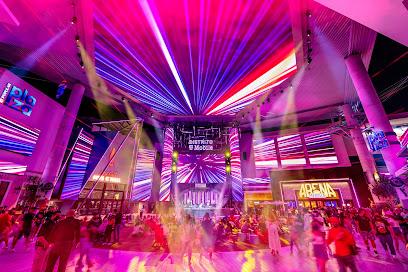
Castillo San Cristóbal
Explore Castillo San Cristóbal, a historical fortress in San Juan, Puerto Rico, and immerse yourself in the island's rich history and stunning coastal views.
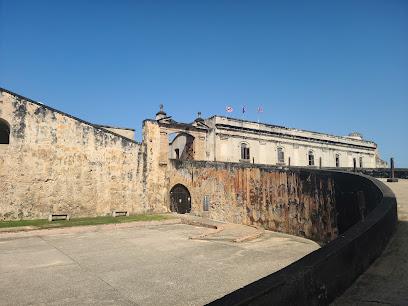
Toro Verde Adventure Park
Experience the thrill of adventure at Toro Verde Adventure Park, Puerto Rico's top destination for zip lining and outdoor excitement amidst stunning natural beauty.
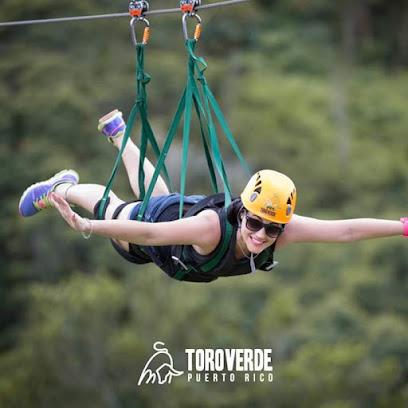
Snorkeling Puerto Rico | Boat Tours
Explore the vibrant underwater world of Fajardo with Snorkeling Puerto Rico - a top destination for marine adventures in the Caribbean.
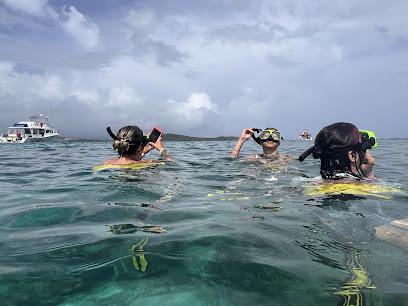
Centro de Bellas Artes Luis A. Ferré
Experience the vibrant arts scene at Centro de Bellas Artes Luis A. Ferré, a premier venue for performing arts in San Juan, Puerto Rico.
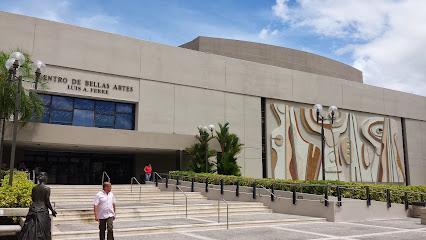
Luis Muñoz Rivera Park
Discover the tranquility and beauty of Luis Muñoz Rivera Park, a cultural gem in San Juan, perfect for relaxation and exploration.
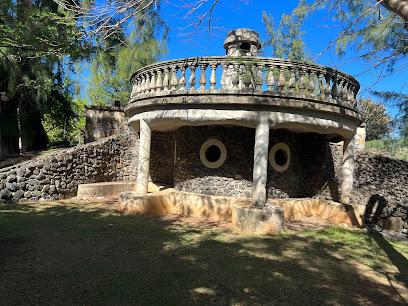
Centro de Bellas Artes de Caguas
Experience the vibrant arts scene at Centro de Bellas Artes de Caguas, a cultural hub featuring performances, exhibitions, and workshops in Puerto Rico.
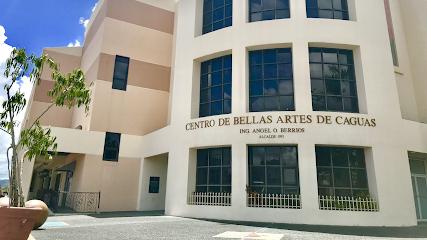
La Ventana al Mar
Discover the beauty and tranquility of La Ventana al Mar, a coastal park in San Juan offering stunning ocean views and vibrant local culture.
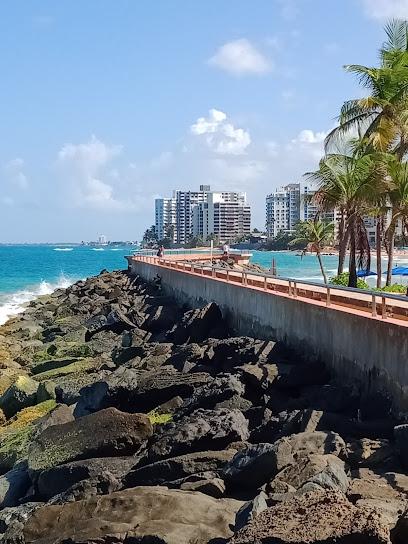
Parque de las Palomas
Explore the stunning Parque de las Palomas in San Juan, Puerto Rico – a serene park filled with vibrant nature and friendly pigeons.
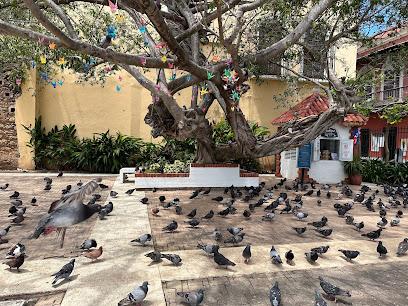
East Island Excursions
Explore the enchanting waters of Puerto Rico with East Island Excursions, your gateway to unforgettable boat tours, snorkeling, and island adventures.
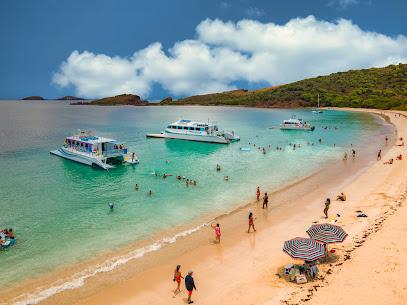
San Juan Cruise Port Terminal
Experience the lively atmosphere of San Juan Cruise Port Terminal, your gateway to the rich culture and stunning sights of Puerto Rico.
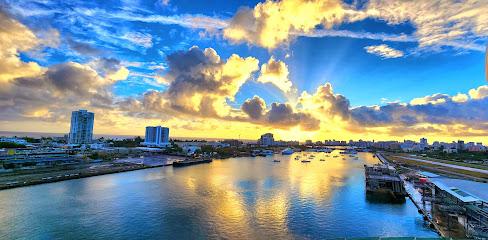
Jardín Botánico y Cultural William Miranda Marín
Experience the vibrant flora and rich culture of Puerto Rico at Jardín Botánico y Cultural William Miranda Marín, a serene botanical garden in Caguas.
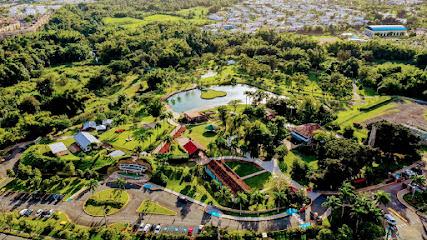
Essential places to dine
El Manjar Criollo
Experience authentic Puerto Rican flavors at El Manjar Criollo in Caguas—where tradition meets taste in every bite.
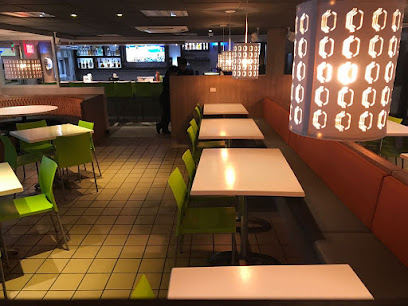
Los Gorditos
Discover the authentic taste of Puerto Rico at Los Gorditos in Caguas - where vibrant flavors meet warm hospitality.
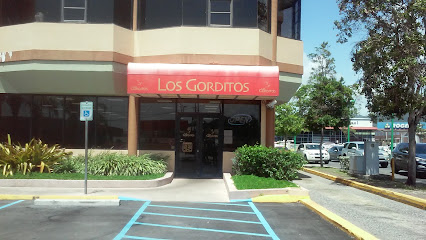
LongHorn Steakhouse
Indulge in mouthwatering steaks and classic American dishes at LongHorn Steakhouse in Caguas – where flavor meets warmth.
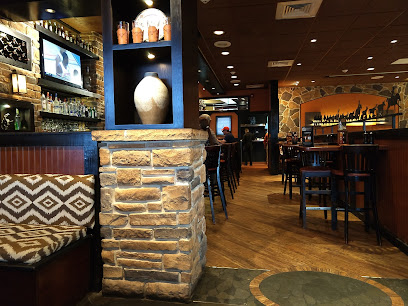
Raices
Experience authentic Puerto Rican cuisine at Raices in Caguas - where every dish celebrates tradition and flavor.
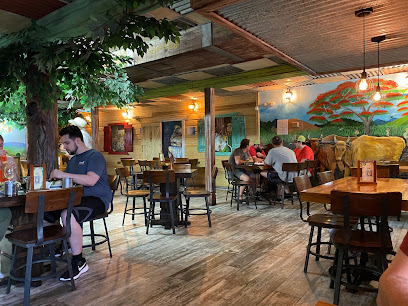
Mr. Sandwich Bistro
Experience delicious sandwiches at Mr. Sandwich Bistro in Caguas - a culinary haven for tourists seeking authentic local flavors.
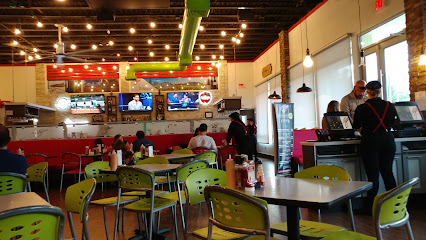
La Placita Tropical (La Melaza)
Experience authentic Puerto Rican cuisine at La Placita Tropical in Caguas—where vibrant flavors meet warm hospitality.
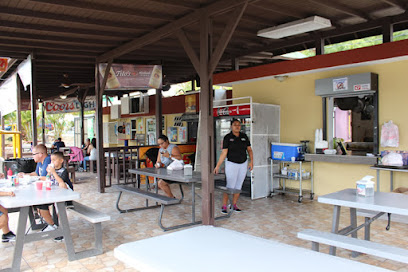
Metropol Restaurant
Experience authentic Caribbean flavors at Metropol Restaurant - where Puerto Rican and Cuban cuisines come alive in Caguas.
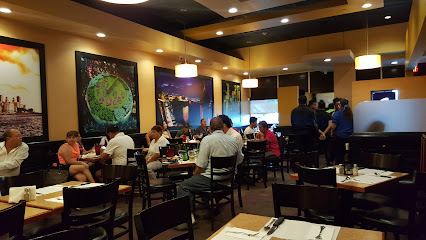
El After Lounge
Discover El After Lounge in Caguas: where gourmet hamburgers meet delightful breakfast options in a warm and welcoming atmosphere.
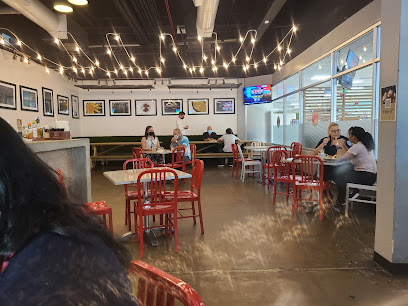
La Mordida Taquería Mexicana
Experience authentic Mexican cuisine at La Mordida Taquería Mexicana in Caguas - where every bite is a celebration of flavor.

Tijuana's Bar & Grill
Experience vibrant flavors and authentic Mexican cuisine at Tijuana's Bar & Grill in Caguas—perfect for food lovers seeking unforgettable meals.
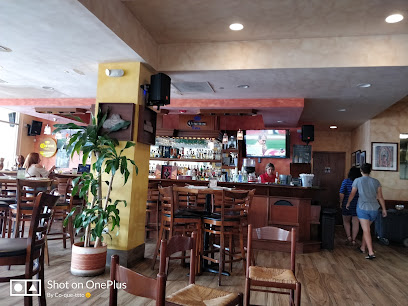
Marcelo
Experience the vibrant flavors of Puerto Rican cuisine at Marcelo in Caguas – where tradition meets taste in every dish.
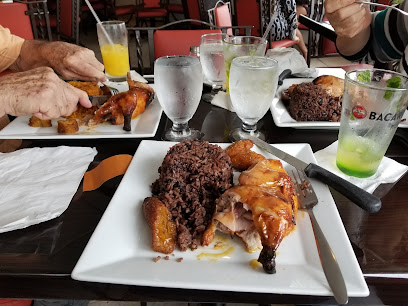
Romano's Macaroni Grill
Experience authentic Italian cuisine at Romano's Macaroni Grill in Caguas – where every meal is a celebration of flavor and hospitality.
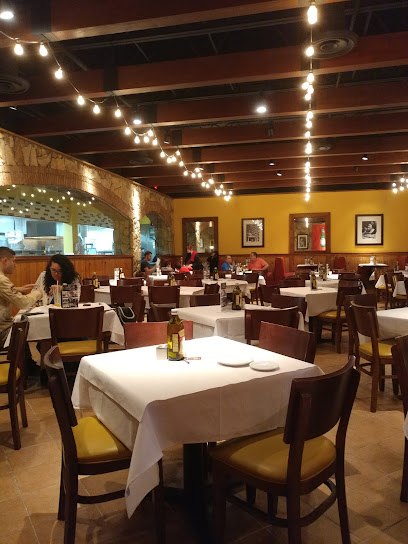
Restaurante La Hacienda
Savor authentic Puerto Rican cuisine at Restaurante La Hacienda in Caguas – famous for its mouthwatering lechon and vibrant local atmosphere.
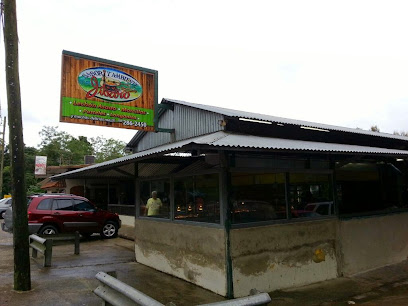
México Lindo
Experience authentic Mexican flavors at México Lindo in Caguas - where every dish tells a story.
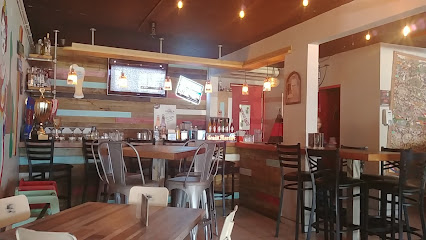
GustosCaguas
Discover GustosCaguas in Caguas: A culinary fusion of Caribbean, Italian & Mexican delights awaits every traveler!
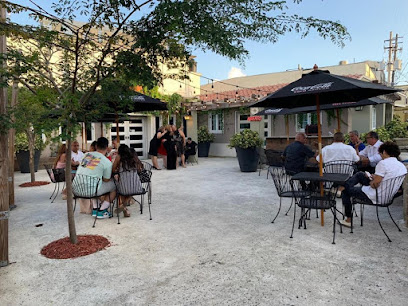
Markets, malls and hidden boutiques
Plaza Centro Mall
Experience the best shopping and dining in Caguas at Plaza Centro Mall, a vibrant hub for tourists and locals alike.
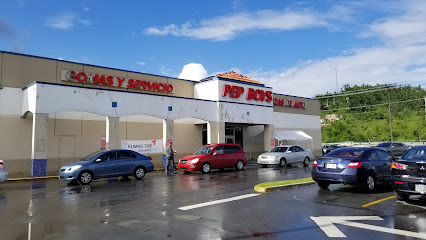
Shops at Caguas
Discover the vibrant Shops at Caguas, a premier shopping destination in Puerto Rico offering diverse retail, dining, and entertainment options for all visitors.

Los Prados Shopping Center
Explore shopping, dining, and entertainment at Los Prados Shopping Center, Caguas' vibrant hub for tourists and locals alike.
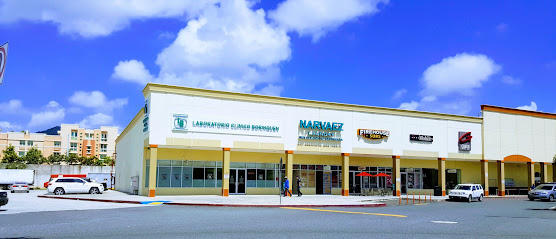
Plaza del Carmen
Experience the vibrant shopping and dining scene at Plaza del Carmen, a premier destination in Caguas, Puerto Rico.
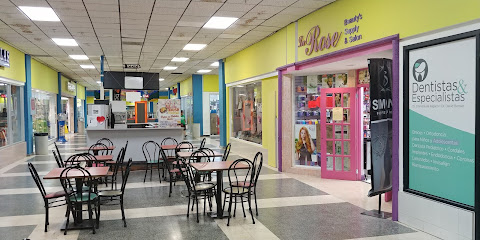
Plaza Villa Blanca
Discover a shopping paradise at Plaza Villa Blanca in Caguas, Puerto Rico, featuring diverse shops, delightful dining, and vibrant entertainment options.
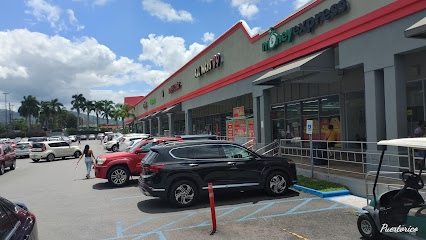
Bairoa Shopping Center
Experience the vibrant local culture at Bairoa Shopping Center in Caguas, where unique shopping and delicious dining await you.
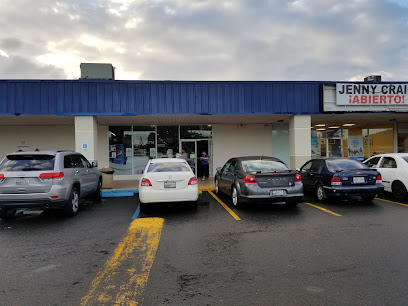
Aliss
Explore Aliss in Caguas for a diverse shopping experience filled with fashion, home goods, and unbeatable deals.
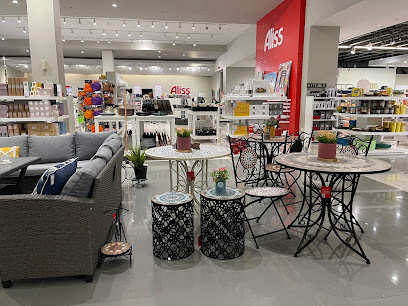
Gatsby Caguas
Explore Gatsby Caguas, a premier clothing store where Puerto Rican fashion meets vibrant style and trendy accessories for every shopper.
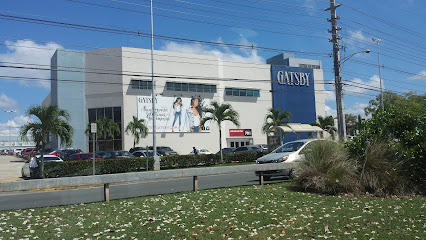
PR Technology Store
Discover the ultimate tech haven at the PR Technology Store in Caguas, Puerto Rico, offering top-notch electronics and expert repair services.
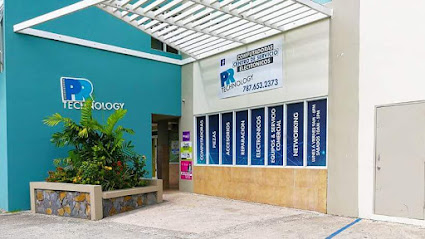
Titan Games
Explore Titan Games in Caguas for an unforgettable experience with board games, miniatures, and collectibles in a vibrant community atmosphere.
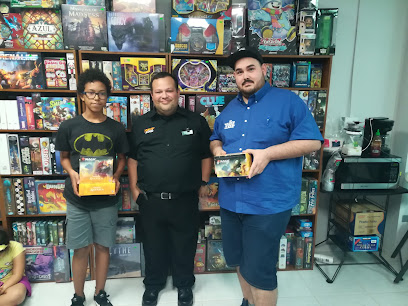
Al's Sport & Al's Unlimited
Discover a wide range of high-quality sporting goods at Al's Sport & Al's Unlimited in Caguas, where sports passion meets exceptional service.
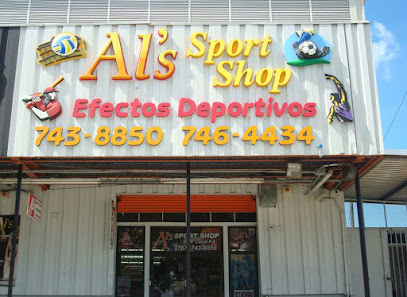
La Zona Gamer
Explore La Zona Gamer in Caguas, Puerto Rico – your ultimate destination for video games, consoles, and collectibles in a vibrant gaming community.
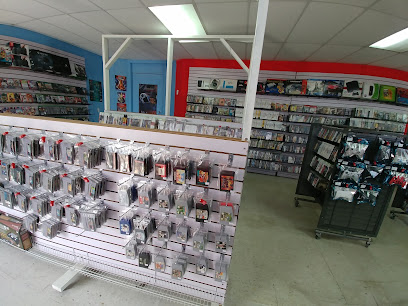
Casa Febus Home Design, Las Catalinas Mall
Explore Casa Febus Home Design in Las Catalinas Mall for exquisite furniture and decor that elevate your home with style and elegance.
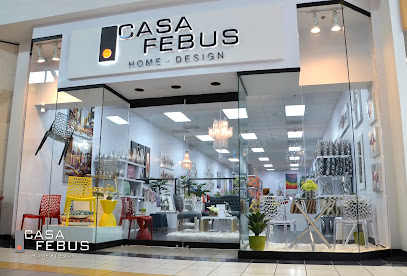
Leonardo's Caguas
Discover sophistication and style at Leonardo's Caguas, your premier tuxedo shop in Puerto Rico offering a wide range of elegant formal wear.
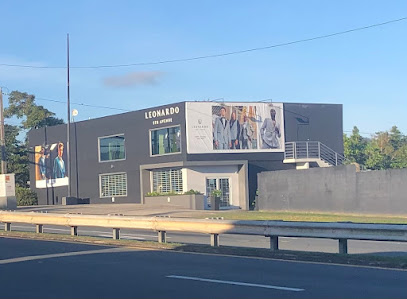
D'Paseo Fashion Boutique
Explore the vibrant fashion scene at D'Paseo Boutique in Caguas, where unique clothing meets personalized shopping experience.

Essential bars & hidden hideouts
Ojalá Speakeasy Restaurant
Discover Ojalá Speakeasy Restaurant in Caguas for an unforgettable dining experience featuring creative tapas, exquisite cocktails, and a vibrant atmosphere.
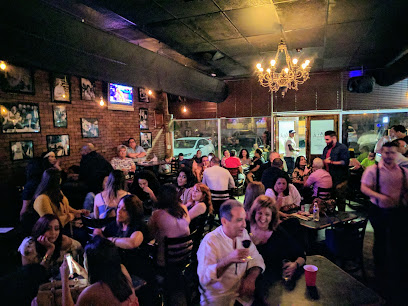
La Lomita de Charlie
Discover authentic Puerto Rican flavors at La Lomita de Charlie, a vibrant grill and bar in Caguas, perfect for tourists seeking delicious local cuisine.
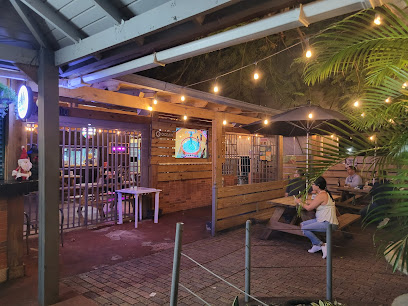
La Vergüenza Caguas
Discover the vibrant nightlife at La Vergüenza Caguas, a lively bar offering a mix of local cocktails, live music, and a friendly atmosphere.
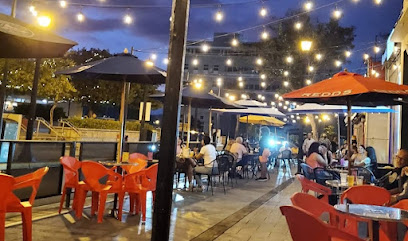
Zaboré Bar & Rest.
Experience the heart of Puerto Rican cuisine at Zaboré Bar & Rest. in Caguas, where flavor meets a vibrant atmosphere.

2 PALITOS BAR & GRILL
Discover the flavors of Puerto Rico at 2 Palitos Bar & Grill, a lively dining spot in Caguas offering delicious cuisine and vibrant nightlife.
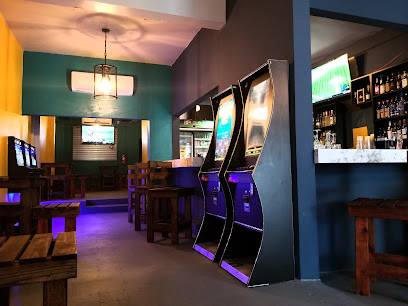
El Cielo Wine & Beers
Discover the vibrant flavors of Puerto Rico at El Cielo Wine & Beers, where exquisite wines and craft brews await in a lively atmosphere.
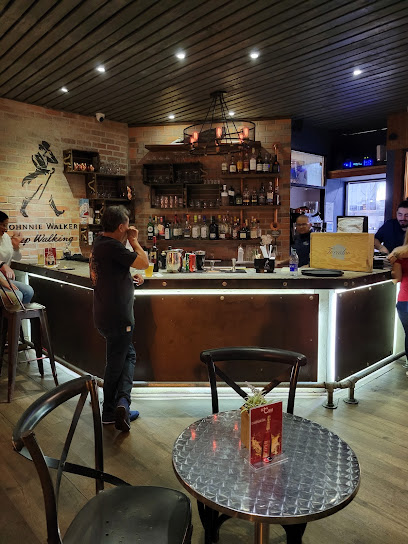
La Terraza d' Jazz
Experience the vibrant blend of culinary delights and live jazz at La Terraza d' Jazz in Caguas, Puerto Rico.
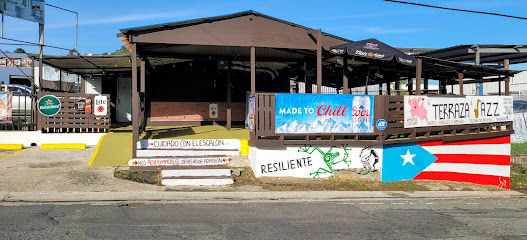
La Ruta Bar Tomas De Castro
Discover La Ruta Bar Tomas De Castro, a vibrant Caguas bar offering local drinks and a friendly atmosphere perfect for relaxation and socializing.
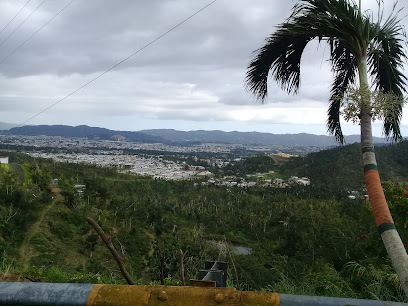
Taverna Barbas Retro Bar
Discover the retro charm and vibrant cocktails at Taverna Barbas Retro Bar in Caguas, the perfect spot for nightlife enthusiasts.
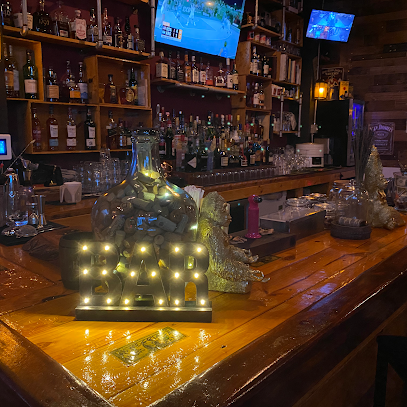
Watusi Caguas
Discover the lively spirit of Watusi Caguas, where local culture meets vibrant nightlife in the heart of Puerto Rico.
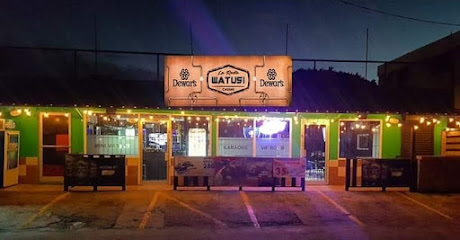
ACORIS Hang Out Bar
Experience the vibrant nightlife of Caguas at ACORIS Hang Out Bar, a welcoming gay bar with delicious drinks and lively entertainment.
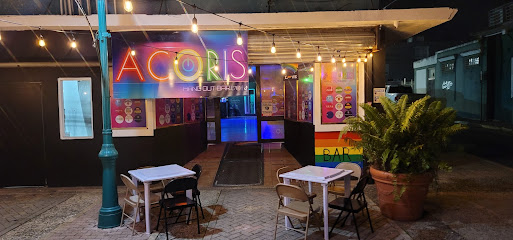
Villa Victoria Sport Bar
Villa Victoria Sport Bar: Your ultimate destination for sports, food, and fun in Caguas, Puerto Rico.
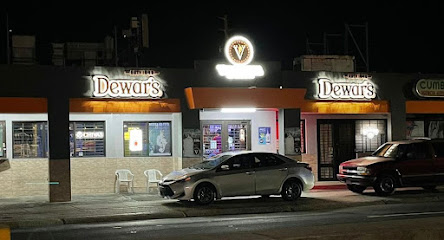
Sr.Sereno Chill Bar
Discover the lively ambiance of Sr. Sereno Chill Bar in Caguas – a local favorite for drinks, music, and unforgettable nights.
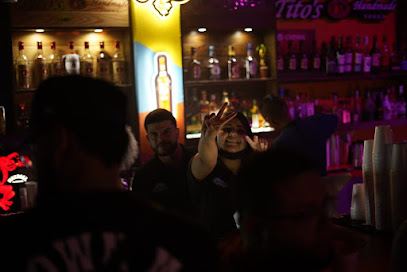
La Vida Bar & Tapas
La Vida Bar & Tapas: Savor exquisite tapas and cocktails in a vibrant Caguas atmosphere, perfect for unforgettable nights out.

El Mangó de Don Juan
Experience the vibrant atmosphere and local flavors at El Mangó de Don Juan, a charming bar in Caguas, Puerto Rico.
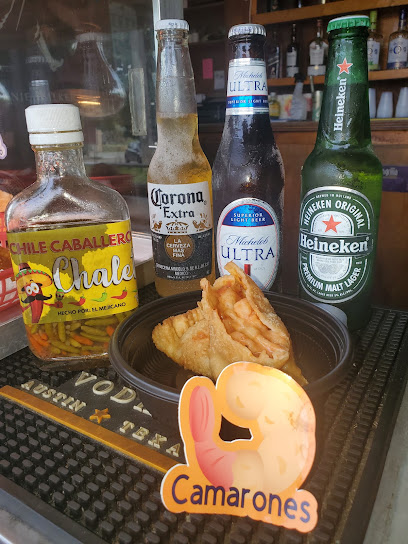
Local Phrases
-
- HelloHola
[oh-lah] - GoodbyeAdiós
[ah-thyohs] - YesSí
[see] - NoNo
[noh] - Please/You're welcomePor favor/De nada
[pohr fah-vohr/deh nah-dah] - Thank youGracias
[grah-syahs] - Excuse me/SorryPerdón
[pehr-dohn] - How are you?¿Cómo estás?
[koh-moh ehs-tahs] - Fine. And you?Bien. ¿Y tú?
[byen. ee too] - Do you speak English?¿Hablas inglés?
[ah-blahs een-glehs] - I don't understandNo entiendo
[noh ehn-tee-ehn-doh]
- HelloHola
-
- I'd like to see the menu, pleaseMe gustaría ver el menú, por favor
[meh goos-tah-ree-ah behr ehl meh-noo, pohr fah-vohr] - I don't eat meatNo como carne
[noh koh-moh kahr-neh] - Cheers!¡Salud!
[sah-lood] - I would like to pay, pleaseMe gustaría pagar, por favor
[meh goos-tah-ree-ah pah-gahr, pohr fah-vohr]
- I'd like to see the menu, pleaseMe gustaría ver el menú, por favor
-
- Help!¡Ayuda!
[ah-yoo-dah] - Go away!¡Vete!
[veh-teh] - Call the Police!¡Llama a la policía!
[yah-mah ah lah poh-lee-see-ah] - Call a doctor!¡Llama a un médico!
[yah-mah ah oon meh-dee-koh] - I'm lostEstoy perdido
[ehs-toy pehr-dee-doh] - I'm illEstoy enfermo
[ehs-toy ehn-fehr-moh]
- Help!¡Ayuda!
-
- I'd like to buy...Me gustaría comprar...
[meh goos-tah-ree-ah kohm-prahr] - I'm just lookingSolo estoy mirando
[soh-loh ehs-toy meer-ahn-doh] - How much is it?¿Cuánto cuesta?
[kwan-toh kwehs-tah] - That's too expensiveEso es muy caro
[eh-soh ehs mwee kah-roh] - Can you lower the price?¿Puedes bajar el precio?
[pweh-dehs bah-hahr ehl pree-syoh]
- I'd like to buy...Me gustaría comprar...
-
- What time is it?¿Qué hora es?
[keh oh-rah ehs] - It's one o'clockEs la una en punto
[ehs lah oo-nah ehn poon-toh] - Half past (10)Las diez y media
[lahs dyehs ee meh-dee-ah] - MorningMañana
[mah-nyah-nah] - AfternoonTarde
[tahr-deh] - EveningNoche
[noh-cheh] - YesterdayAyer
[ah-yehr] - TodayHoy
[oy] - TomorrowMañana
[mah-nyah-nah] - 1Uno
[oo-noh] - 2Dos
[dohs] - 3Tres
[trehs] - 4Cuatro
[kwah-troh] - 5Cinco
[seen-koh] - 6Seis
[says] - 7Siete
[syeh-teh] - 8Ocho
[oh-choh] - 9Nueve
[nweh-veh] - 10Diez
[dyehs]
- What time is it?¿Qué hora es?
-
- Where's a/the...?¿Dónde está...?
[dohn-deh ehs-tah] - What's the address?¿Cuál es la dirección?
[kwal ehs lah dee-rehk-syohn] - Can you show me (on the map)?¿Puedes mostrarme (en el mapa)?
[pweh-dehs mohs-trahr-meh (ehn ehl mah-pah)] - When's the next (bus)?¿Cuándo es el próximo (autobús)?
[kwan-doh ehs ehl proh-ksee-moh (ow-toh-boos)] - A ticket (to ....)Un boleto (a ....)
[oon boh-leh-toh (ah)]
- Where's a/the...?¿Dónde está...?
History of Caguas
-
Before European colonization, the region of Caguas was inhabited by the Taíno people. The area, known to them as 'Caguax,' was a thriving community with rich traditions and a deep connection to the land. The Taíno culture, with its intricate social structures, agricultural practices, and spiritual beliefs, laid the foundation for the region's enduring legacy.
-
Caguas was officially founded on January 1, 1775, by Spanish settlers. Named after the Taíno chief Caguax, the town was established as a strategic agricultural hub due to its fertile lands. The early Spanish influence is evident in the town's architecture, layout, and Catholic traditions, which continue to shape its cultural landscape.
-
The 19th century marked a period of economic prosperity for Caguas. The town became a vital center for coffee and tobacco production, contributing significantly to Puerto Rico's economy. The construction of the Caguas Train Station in 1891 facilitated the transportation of goods, further boosting the local economy and fostering growth.
-
Caguas played a significant role in Puerto Rico's quest for independence from Spanish rule. In 1868, the town's residents supported the Grito de Lares, an armed uprising aimed at gaining independence. Although the rebellion was ultimately unsuccessful, it galvanized the local spirit of resistance and contributed to the broader movement for Puerto Rican autonomy.
-
The 20th century brought modernization and urbanization to Caguas. The town transitioned from an agriculture-based economy to a more diverse industrial and commercial hub. The establishment of factories, schools, and healthcare facilities marked a new era of development, transforming Caguas into a pivotal city within Puerto Rico.
-
Caguas has long been a center of cultural and artistic expression. The city is home to numerous museums, theaters, and cultural centers, such as the Caguas Museum of Art and the José Ignacio Quintón House of the Arts. These institutions celebrate the rich artistic heritage of the region, showcasing works by local and international artists and fostering a vibrant cultural scene.
-
Today, Caguas is a bustling city that harmoniously blends its historical roots with modern amenities. Known as the 'Heart of Puerto Rico,' it serves as a cultural and economic hub, offering visitors a unique insight into the island's history, traditions, and contemporary life. From its historic downtown to its lush botanical gardens, Caguas continues to captivate and inspire.
Caguas Essentials
-
Caguas is located in the central mountain range of Puerto Rico, making it accessible from various points on the island. The nearest major airport is Luis Muñoz Marín International Airport (SJU) in San Juan, approximately 30 kilometers (19 miles) away. From the airport, you can rent a car, take a taxi, or use a ride-sharing service to reach Caguas. The drive typically takes around 30-40 minutes via PR-52 highway. Public buses (AMA) and shuttle services are also available, although less frequent.
-
Caguas has a well-connected road network, making car rental a convenient option for exploring the area. Local taxis and ride-sharing services like Uber are readily available for short trips. The city's public transportation system includes buses that connect different neighborhoods and surrounding areas. For those preferring to cycle, bike rentals are available, and the city has several bike-friendly routes. Walking is also a pleasant way to explore the downtown area, where many attractions are located.
-
The official currency of Puerto Rico is the United States Dollar (USD). Credit and debit cards are widely accepted in hotels, restaurants, and shops in Caguas. ATMs are plentiful, especially in the downtown area, making it easy to withdraw cash as needed. However, it is advisable to carry some cash for small purchases, especially in more remote areas or local markets where card payment may not be an option.
-
Caguas is generally a safe destination for tourists, but standard precautions should be taken. Avoid walking alone at night in poorly lit or unfamiliar areas. Some neighborhoods, such as La Barra and Las Carolinas, have higher crime rates and should be avoided, especially after dark. Keep an eye on your belongings in crowded places and be cautious of pickpockets. Always use reputable transportation services and avoid accepting rides from strangers.
-
In case of emergency, dial 911 for immediate assistance. Caguas has several medical facilities, including HIMA San Pablo Caguas Hospital, which offers comprehensive emergency services. It is recommended to have travel insurance that covers medical emergencies. For minor health issues, there are numerous pharmacies where you can purchase over-the-counter medications. The local police station is also available for assistance if needed.
-
Fashion: Do dress comfortably and casually, but avoid overly revealing attire, especially when visiting religious sites. Religion: Do respect local customs and traditions. When visiting churches, dress modestly and behave respectfully. Public Transport: Do be polite and considerate to fellow passengers. Avoid eating or drinking on public transport. Greetings: Do greet people with a friendly 'Hola' or a handshake. Locals appreciate politeness. Eating & Drinking: Do try local dishes and accept food offerings graciously. Don't refuse hospitality, as it is considered impolite.
-
To experience Caguas like a local, visit the Mercado Criollo, where you can buy fresh local produce and traditional Puerto Rican goods. Engage with locals; they are often friendly and eager to share stories about the city's history and culture. Don't miss the Botanical and Cultural Garden William Miranda Marín, a beautiful spot to relax and learn about native flora. For a unique experience, attend a local festival or event, such as the Festival del Apio, which celebrates one of the city's traditional crops.
Trending Landmark in Caguas
-
Shops at Caguas
-
Plaza Pública Santiago R. Palmer
-
Jardín Botánico y Cultural William Miranda Marín
-
El Manjar Criollo
-
La Placita Tropical (La Melaza)
-
La Asturiana
-
Ojalá Speakeasy Restaurant
-
Plaza Centro
-
Plaza del Mercado de Caguas
-
La Lomita de Charlie
-
El Grifo
-
Kaffe Haus
-
La Cueva del Mar Caguas
-
Pa’Cuba 1954
-
Caguas Food Park
Nearby Cities to Caguas
-
Things To Do in Carolina
-
Things To Do in Bayamón
-
Things To Do in Guayama
-
Things To Do in Dorado
-
Things To Do in Luquillo
-
Things To Do in Fajardo
-
Things To Do in Manatí
-
Things To Do in Vieques
-
Things To Do in Ponce
-
Things To Do in Arecibo
-
Things To Do in Culebra
-
Things To Do in Guánica
-
Things To Do in Isabela
-
Things To Do in Cabo Rojo
-
Things To Do in Aguadilla





